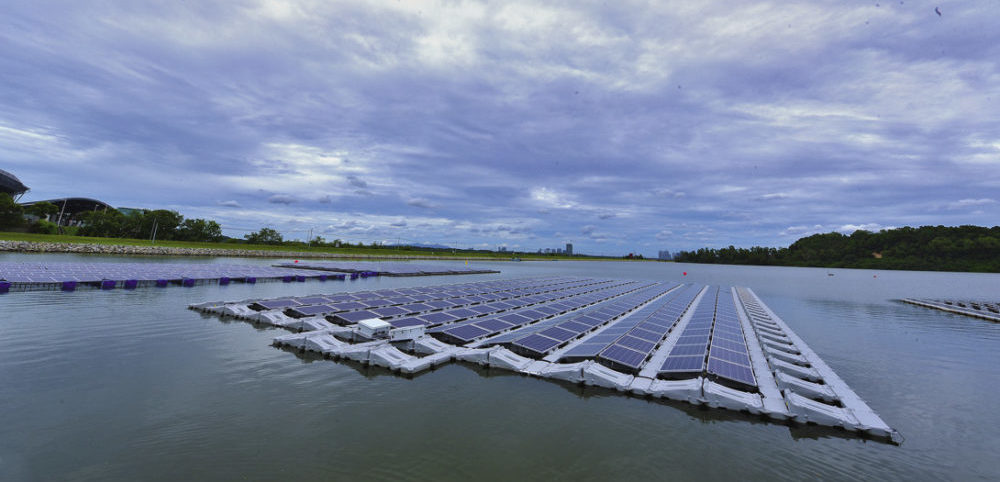When it came to identifying a suitable site for floating solar in the densely-populated, land scarce city state of Singapore, it seems developers did not have to look too far.
The Solar Energy Research Institute of Singapore (SERIS) had been using the Tengeh Reservoir as a test bed for floating solar installations since 2017, so when water authority the Public Utilities Board (PUB) sought an appropriate location for the state’s largest floating installation, Tengeh must have been an obvious choice.
Details of a 50 MW installation described as “Southeast Asia’s largest public tender for floating PV” were revealed this morning by Norwegian technical consultancy DNV GL, which has been appointed technical advisor for the project.
Commissioning authority PUB last month issued a tender to design, build, own and operate the project, for which DNV GL says it has already carried out preliminary design, an independent energy assessment, technology benchmarking and business model studies.
The world’s biggest
The Bærum-based consultancy will now provide tender support and proposal evaluation during the bidding process to secure rights to develop the project and will then carry out “design reviews, testing and commissioning reviews during the construction phase [and] performance analysis and site testing when the project is operational”, announced a DNV GL press release issued today.
The consultancy said the project is set to be operational by 2021 and will then power a water treatment facility at the site.
Although the DNV GL announcement indicated the Tengeh project “will be one of the largest single floating solar systems in the world”, it is not on the same scale as the 150 MW project developed by inverter maker and floating PV pioneer Sungrow in an area flooded after mine subsidence in Guqiao, China last year.
Pairing hydro with floating PV
Another 150 MW floating installation, also in Anhui province, was reportedly due for completion by the Three Gorges New Energy Company in May last year.
A report published by SERIS and the World Bank Group late last year cited the potential for floating solar to become a “third pillar” of solar power deployment, after ground mounted systems and rooftop PV, and its attractiveness to a city-state rated the third most densely populated country on earth by worldatlas.com is obvious.
The Renewable Energy Global Status Report 2018 published by the Renewable Energy Policy Network for the 21st Century estimated hydropower-linked reservoirs around the world take up a surface area of 265.7km². Floating PV is considered the perfect technology to twin with such hydro generation assets and it has been estimated covering a quarter of that global hydropower surface area with floating solar would secure 4.4 TW of new PV capacity.
This content is protected by copyright and may not be reused. If you want to cooperate with us and would like to reuse some of our content, please contact: editors@pv-magazine.com.




2 comments
By submitting this form you agree to pv magazine using your data for the purposes of publishing your comment.
Your personal data will only be disclosed or otherwise transmitted to third parties for the purposes of spam filtering or if this is necessary for technical maintenance of the website. Any other transfer to third parties will not take place unless this is justified on the basis of applicable data protection regulations or if pv magazine is legally obliged to do so.
You may revoke this consent at any time with effect for the future, in which case your personal data will be deleted immediately. Otherwise, your data will be deleted if pv magazine has processed your request or the purpose of data storage is fulfilled.
Further information on data privacy can be found in our Data Protection Policy.